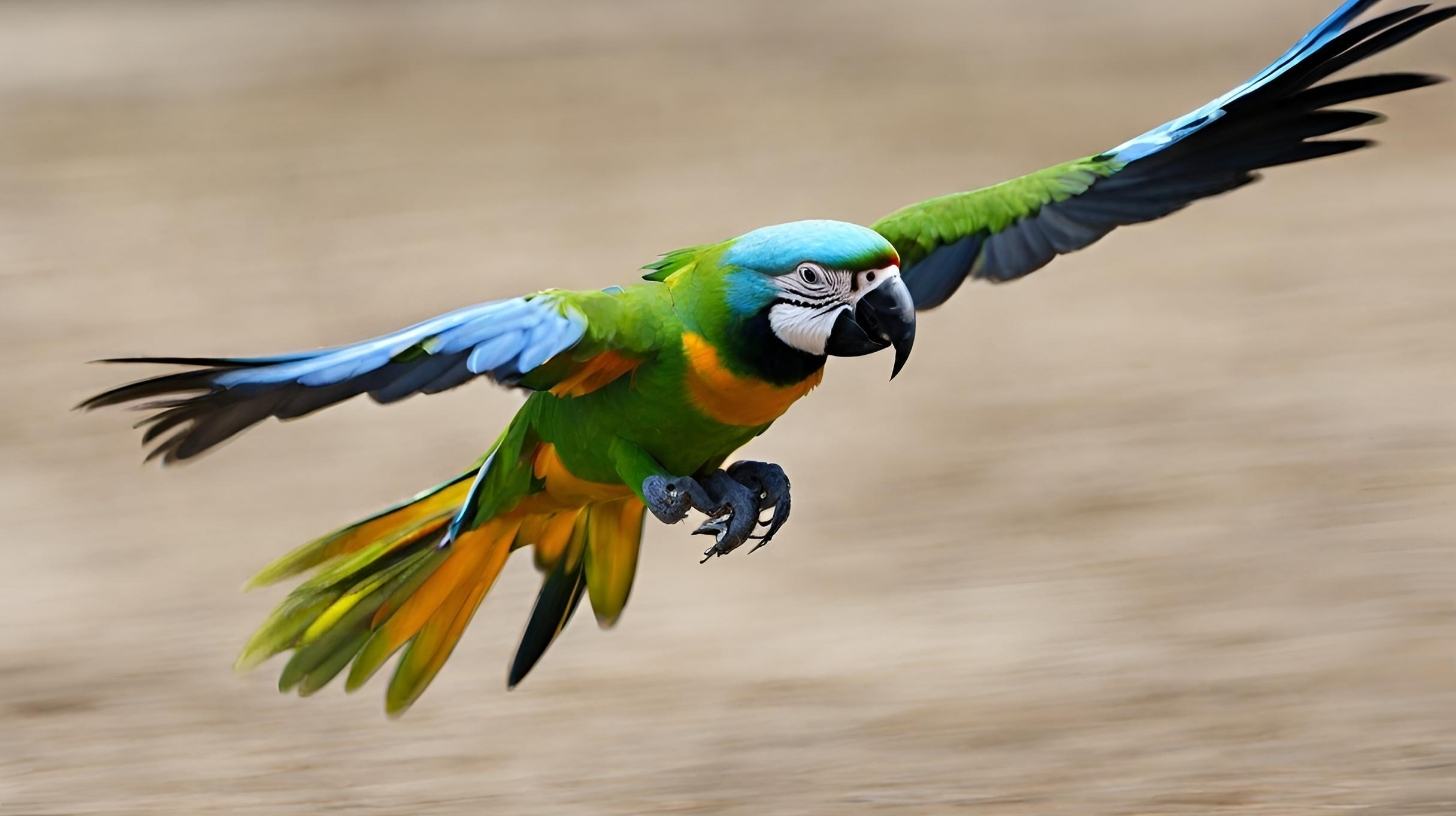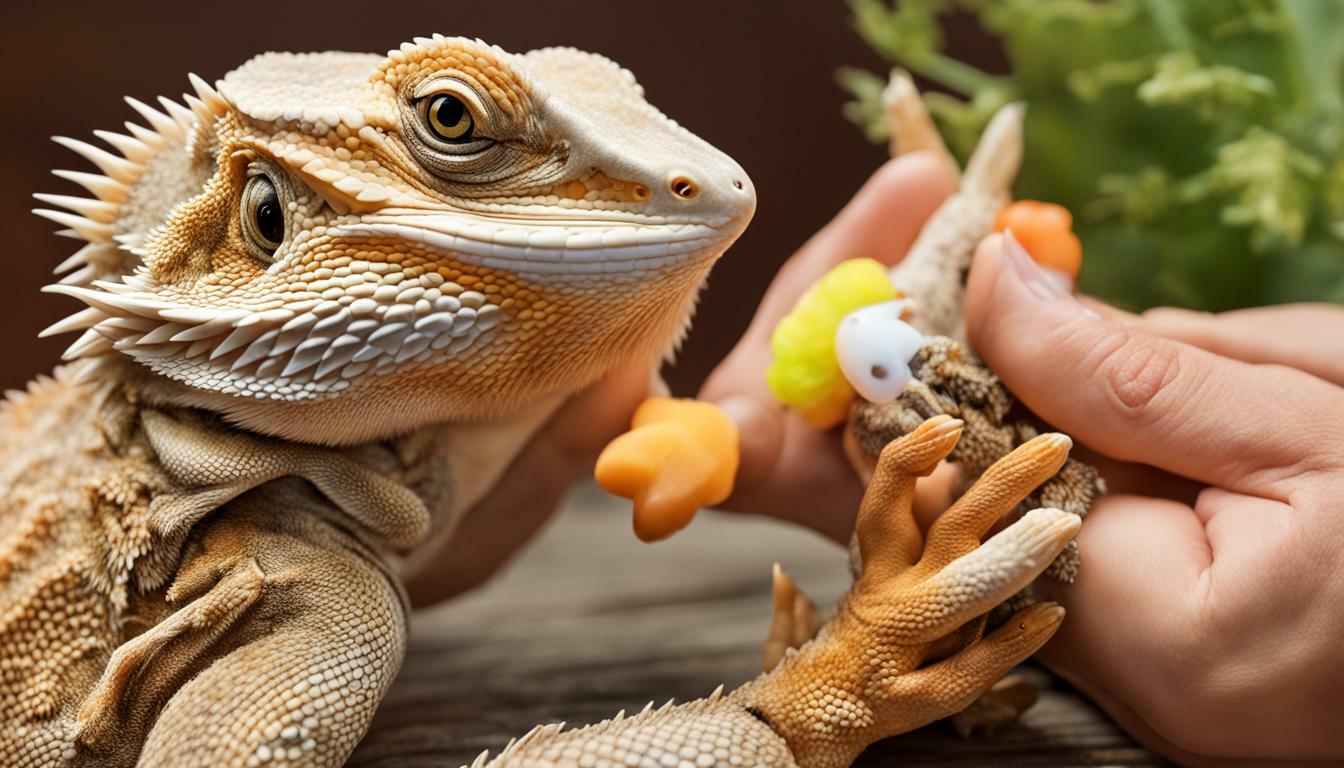How Fast Can a Parrot Fly? Uncovering the Speed

Table of content:
- Typical Cruising Speeds
- Top Speeds
- Factors Affecting a Parrot’s Top Speed
- Comparing Parrot Flight Speed to Other Birds
- Fastest Parrot Species
- Do Wild Parrots Fly Faster Than Pet Parrots?
- Impact of Weight and Payloads
- Speed Differences Between Parrot Flight Modes
- Do Parrots Slow Down When Carrying Objects?
- Can Parrots Maintain High Speeds Over Long Distances?
- Final Thoughts
Parrots are known for their beautiful, vibrant plumage and their ability to mimic human speech. But how fast can these colorful birds actually fly? The flight speed of parrots varies significantly between species, and depends on several factors like body size, wing shape, and flight style.
Typical Cruising Speeds
Most parrots fly at relatively slow speeds when simply cruising around. Small parakeets like budgerigars and parrotlets have an average cruising speed of 20 to 30 mph. Medium-sized parrots like monk parakeets and cockatiels fly around 30 to 40 mph. Large parrots like macaws and cockatoos fly between 40 to 60 mph.
These speeds allow parrots to conserve energy when covering short distances. It’s similar to humans walking compared to running. But when needed, parrots can reach much faster maximum speeds.
Top Speeds
The fastest parrots in full horizontal flight can reach speeds over 60 mph. Peregrine falcons are among the fastest birds on Earth, diving at over 200 mph. Parrots are unlikely to match peregrine speeds, but some come close.
For example, monk parakeets are relatively small parrots with an average weight around 3 ounces. But researchers have recorded monk parakeets reaching top speeds of 56 mph in level flight. Similar speeds have been observed in parakeets and conures.
Larger macaws and cockatoos can reach between 60-75 mph at full throttle. Their broader wings and more powerful flight muscles give them greater speed potential. The hyacinth macaw, with its huge wingspan up to 1.5 m, has been observed hitting speeds over 70 mph in a steep dive.
So while parrots generally fly slower for routine flights, they can accelerator to high speeds when needed for long distance travel, escaping predators, or other demanding situations.
 Factors Affecting a Parrot’s Top Speed
Factors Affecting a Parrot’s Top Speed
What determines how fast an individual parrot can fly? Here are some of the main factors:
- Body size – In general, larger parrot species with longer wingspans can reach faster top speeds. The extra wing area produces more lift.
- Wing shape – Broad, rounded wings generate greater lift for faster flat flight. Long, pointed wings provide more efficient gliding.
- Flight style – Parrots that fly using rapid, powered wing flapping can accelerate faster than undulating/gliding parrots.
- Age and health – Younger, fitter parrots can fly faster than older or unwell birds. Physical conditioning improves speed.
- Weather conditions – Headwinds slow parrots down, while tailwinds allow them to fly faster relative to the ground.
So a large, athletic macaw flying with a tailwind can reach much faster speeds than a small parrotlet fighting a strong headwind. But in general, most parrots can at least double their cruising speed when flying full tilt.
Comparing Parrot Flight Speed to Other Birds
Parrots are relatively swift fliers compared to many bird species. They are capable of reaching speeds matching or exceeding those of predatory hawks and vultures. But parrots cannot fly nearly as fast as swifts and falcons specialized for aerial speed.
Some examples:
- Peregrine Falcon – Over 200 mph dive speed
- White-throated Needletail – Over 100 mph in level flight
- Budgerigar – 20-30 mph cruising speed
- Bald Eagle – 30-35 mph while hunting
- Hyacinth Macaw – 60+ mph in fast flight
So while parrots are not the fastest birds by any means, their maximum airspeeds are impressive compared to average songbird and raptor speeds. Their flight abilities allow them to thrive in a variety of habitats.
Fastest Parrot Species
Certain parrot species stand out for their aerial speed capabilities:
- Monk Parakeets – Can reach 56 mph even with small body size
- Rose-ringed Parakeets – Observed at 50+ mph in steep dives
- Conures – Relatively quick and agile fliers
- Macaws – The largest species reach 60-75+ mph when needed
- African Gray Parrots – Medium-sized but can hit 50 mph
- Cockatoos – Broad wings provide speed despite bulkier bodies
- Budgerigars – Surprisingly fast for a small parakeet
The most maneuverable parrots like budgies and conures can make tight turns and change directions rapidly while at speed. But larger species with more raw power can reach faster straight line airspeeds.
Do Wild Parrots Fly Faster Than Pet Parrots?
Most evidence suggests wild parrots are capable of flying faster than pet parrots of the same species. Some key differences that may account for this:
- Physical conditioning – Wild parrots fly constantly while pets get less exercise.
- Motivation – Escaping predators can necessitate maximum flight speeds.
- Wing clipping – Clipped wings may hinder a pet parrot’s top speed.
- Training – Wild parrots practice high-speed flying from a young age.
- Weathering – Wild parrots’ flight feathers are aerodynamically conditioned by the elements.
However, a healthy pet parrot that receives plenty of free flight exercise may come close to matching its wild counterparts for top speed. The difference is likely to be small in well cared for aviary birds.
Impact of Weight and Payloads
Extra weight hampers flight speed in parrots and all bird species. This is why parrots will drop or eat food items to lighten their load when escaping predators.
Carrying extra payload weight forces a parrot to work harder to produce sufficient lift, creating more drag. This slows acceleration and can reduce top speed until the bird drops the extra weight.
Conversely, travelling light with empty crops and little body fat enables parrots to reach faster top speeds and maneuver more adeptly in the air. This helps explain why many parrot species have peaked flight speeds during migration when body weight is optimized.
Speed Differences Between Parrot Flight Modes
Parrots employ various flight modes and styles depending on the situation. As a general rule, faster modes require more rapid, powered flapping while slower flight relies more on gliding and soaring.
Some examples of parrot flight modes ranked from faster to slower maximum speed:
- Fast horizontal flight – Rapid flapping with some gliding, wings held horizontally
- Undulating flight – Flapping with periods of wings held upright
- Gliding – Wings extended and elevated, no flapping
- Soaring – Wings held upright while bird spirals upward on thermal updrafts
- Hovering – Wings beating to remain stationary relative to a fixed position
- Takeoff – Downstroke and jump from perch followed by accelerated flapping
- Landing – Wings beating forward to stall momentum before alighting on landing surface
So parrots flying full tilt using powered, horizontal flapping flight achieve their fastest speeds. Gliding, soaring, and hovering require slower airspeeds to maintain control.
Do Parrots Slow Down When Carrying Objects?
Yes, parrots do slow down noticeably when carrying food items or other objects in their beaks. This is because the extra mass affects the bird’s overall weight distribution and flight dynamics.
Tests with trained parrots carrying small weighted bundles show their top speed decreased in proportion with the payload weight increase. The same parrot’s top speed diminished by:
- 2% when carrying 5% extra weight
- 8% when carrying 10% extra weight
- 17% when carrying 20% extra weight
So a parrot’s speed is impacted when carrying anything that significantly increases its body weight. This effect is more pronounced when trying to fly fast horizontally versus gliding or soaring.
Can Parrots Maintain High Speeds Over Long Distances?
Parrots can only fly at top speeds for short bursts over longer flights. The muscular effort required for rapid flapping flight is extremely taxing and cannot be sustained for extended durations.
Even the fittest parrots need to stop to rest periodically on long journeys of hundreds of miles. Most smaller parrots can only fly rapidly for a few minutes at a time before slowing down to a more sustainable cruising speed.
However, large parrots like macaws have enough stamina to maintain relatively high airspeeds for several hours, especially with a tailwind. This helps enable their long distance migrations in the wild.
Final Thoughts
While parrots are not the world’s fastest flying birds, they are incredibly agile aviators capable of impressive speeds. Most parrots can at least double their cruising speed of 20-40 mph when flying full tilt to escape danger. Larger species can reach 60+ mph given enough room to accelerate. So next time you see a parrot take flight, keep an eye out for their maximum flight speeds!
Welcome. I’m Adreena Shanum, the proud owner of this website, and I am incredibly passionate about animals, especially poultry. I founded adreenapets.com as a labor of love, stemming from my desire to share my knowledge and experiences with poultry enthusiasts worldwide.




